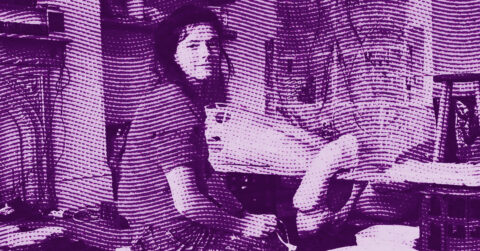Listen to me carefully, you bunch of snobs: in the midst of the chaos of contemporary Chinese art, where concepts jostle and manifestos multiply faster than Warhol reproductions in a souvenir shop, an artist emerges who has transformed catastrophe into artistic language. Xue Song is neither a chatty theorist nor a salon provocateur. He is a stubborn practitioner of collage and combustion, an artist who for over thirty years has been building his work on the smoldering ruins of his first studio.
The story begins simply: a fire ravages his studio in the early 1990s, destroying his oil paintings and calligraphy. Where others might have seen the end of everything, Xue Song discovers his true beginning. The charred fragments, the singed pieces of paper, the ashes mixed with glue become his raw material. This particular alchemy of disaster turned into creation makes him one of the most singular representatives of what is called “Chinese Political Pop”, but also much more.
For Xue Song far exceeds the conventional categories. Born in 1965 in rural Anhui province, trained in the stage design department of the Shanghai Theater Academy in 1988, he arrived in the metropolis at the very moment when China opened up to Western influences. This synchronicity is not trivial. It frames his journey in a permanent tension between tradition and modernity, between the millennial Chinese heritage and the codes of contemporary Western art.
Xue Song’s work engages strikingly with the theatrical universe, not superficially, but in its very conception of space and time. Like in theater, his canvases function through the superimposition of planes, through the play of masks and revelations. The technique of collage becomes in his hands a true visual dramaturgy where each fragment plays its role in a complex staging. His silhouettes of Marilyn Monroe or Coca-Cola, constructed from thousands of pieces of traditional Chinese calligraphy, evoke theatrical transformations where one character hides another [1]. This theatrical approach is particularly evident in his series “Dialogue with the Masters”, where he stages visual confrontations between Picasso and Qi Baishi, between Mondrian and Song landscape artists, creating true dramatic plates where aesthetics clash. The artist orchestrates these impossible encounters with the mastery of a director who knows how to make temporalities and styles coexist. His compositions breathe according to a theatrical rhythm, alternating moments of tension and resolution, visual crescendos and contemplative pauses. This scenographic dimension partly explains the hypnotic power of his works: they do not just show, they reveal a representation of the world in constant motion.
The theatrical influence is also evident in his way of constructing the image through successive layers, like sets that overlap and reveal themselves gradually. Each look at a work by Xue Song discovers new details, new meanings, like a show that unfolds over time. This specific temporality, inherited from his scenographic training, radically distinguishes his work from the more static approaches of Western collage. Where a Rauschenberg accumulates, Xue Song orchestrates. Where the former juxtaposes, the latter composes a visual symphony with multiple movements.
But it is with architecture that his work reveals its deepest and most disturbing dimensions. Xue Song literally constructs his works like buildings, stone by stone, fragment by fragment. This architectural approach is not coincidental: it is rooted in an ancient Chinese conception of space and construction. In the Chinese architectural tradition, particularly that of gardens and palaces, harmony is born from the learned composition of heterogeneous elements that find their unity in a higher balance. This is exactly what Xue Song achieves with his collages [2]. His works function like miniature architectures where each piece of burned paper, each fragment of calligraphy, each shard of contemporary image finds its place in a coherent whole that transcends the sum of its parts. This architectural logic explains the paradoxical monumentality of his works: even in modest formats, they impose a presence that evokes great constructions. The artist manipulates scales with the virtuosity of an architect, creating mental spaces that seem to extend far beyond the physical limits of the canvas.
The most remarkable aspect of this architectural approach lies in its ability to bring together different temporalities within the same structure. As in the Beijing hutongs where eras mix, Xue Song’s works simultaneously accommodate elements from imperial China, the Maoist period, and consumerist modernity. This temporal stratification creates a visual archeology that allows one to read contemporary Chinese history in all its complexity. Each collage thus becomes an architectural testimony where the layers of history overlap, revealing the permanences and ruptures of Chinese civilization. This architectural dimension is also manifested in his recent series “Fa Nature” (法自然), where the artist draws from the grains of wood, the veins of marble, and natural patterns to build compositions that evoke the great landscapes of traditional Chinese painting, but with a resolutely contemporary spatial logic.
Xue Song’s technique reveals a method of almost scientific rigor. In his Shanghai studio, every gesture obeys a precise protocol: initial composition, selection of fragments according to their texture and symbolic charge, controlled calcination, assembly in successive layers, application of acrylic paint and protective varnish. This systematization of the creative process recalls the workshops of the Renaissance where technique was used in the service of a global aesthetic vision. But with Xue Song, this method serves an aesthetic of recovery and transformation that perfectly corresponds to the spirit of contemporary Chinese times.
For it is indeed there that the strength of his proposition lies: Xue Song artistically embodies the contradictions and tensions of today’s China. His works give visual form to this China that must constantly negotiate between past and future, between national identity and globalization, between socialism and capitalism. When he superimposes traditional calligraphy and Coca-Cola logos, he is not making second-degree Pop Art, he reveals the daily reality of a billion and a half Chinese people.
His series “Nouveau paysage” (新山水) perfectly illustrates this ability to capture the era in its contradictions. These compositions divide the space between earth and water, between Chinese pictorial tradition and Western masters. The earth, made up of fragments of Song and Yuan paintings, dialogues with the water populated by works from the Renaissance and the Baroque. This mental geography maps with striking precision the cultural state of contemporary China, torn between its deep roots and external influences.
The recent evolution of his work towards the “Fa Nature” series marks a significant turning point. Inspired by Laozi’s Dao De Jing, “Man follows the laws of the earth, the earth follows the laws of heaven, heaven follows the laws of the Dao, the Dao follows the laws of nature,” Xue Song gradually abandons pop references to explore a purer abstraction. This mutation is not a rejection but a deepening. The artist, born in Dangshan in Anhui, a land steeped in Taoist culture, returns to his philosophical roots after exploring the sirens of urban modernity.
This trajectory reveals a remarkable artistic maturity. Where many of his contemporaries have locked themselves into the repetition of effective formulas, Xue Song continues to question his own language. His recent works, less immediately spectacular, gain in meditative depth. The fragments of images become more abstract, the references more subtle, the overall effect more contemplative.
The international recognition enjoyed by Xue Song testifies to his ability to speak a universal artistic language while remaining deeply rooted in his original culture. His works are featured in the collections of the Museum of Fine Arts in Boston, the M+ in Hong Kong, the National Museum of China in Beijing. This global diffusion does not weaken his proposition, it confirms it: in a globalized world, the issues he explores, relation to tradition, impact of consumption, negotiation with modernity, concern all societies.
Yet, Xue Song avoids the trap of bland cosmopolitanism. His work retains a specifically Chinese specificity that lies in his conception of harmony. Unlike the Western avant-gardes, which have often favored rupture and conflict, Xue Song constantly seeks balance in diversity. This approach, inherited from classical Chinese philosophy, allows him to make opposites coexist without canceling them out. His collages do not hierarchize the elements: a Tang calligraphy coexists equally with a contemporary advertising slogan.
This aesthetic of peaceful coexistence reveals a specifically Chinese worldview, but it resonates with global contemporary concerns. At a time when the question of cultural mixing and hybridization becomes central, Xue Song offers a model of creative synthesis that avoids both uniformity and identity withdrawal.
The use of fire in his creative process adds an almost ritualistic dimension to his work. This controlled combustion is not just technical, it is symbolic. In Chinese thought, fire purifies and transforms. It allows the passage from one state to another. Xue Song uses this symbolism to metamorphose the waste of consumer society into noble artistic material. This contemporary alchemy makes him a bridge between worlds, a visual translator of the mutations of his era.
His current studio, located in the M50 art district of Shanghai, functions as a laboratory for this permanent transformation. The walls are covered with magazines, newspapers, art books, advertisements that he collects daily. This systematic accumulation testifies to a working method that makes the artist an involuntary archivist of his time. Each fragment he cuts and burns bears the trace of a moment, an era, a collective concern.
This documentary dimension of his work distinguishes him from other collage practitioners. Where many use this technique for purely plastic effects, Xue Song makes it an instrument of social analysis. His works thus constitute a visual chronicle of Chinese transformation since the 1990s. They allow us to read, in successive layers, the evolution of mentalities, tastes, obsessions of a society in accelerated mutation.
Xue Song’s collaborations with luxury brands, such as Salvatore Ferragamo, Porsche or Jaeger-LeCoultre, perfectly illustrate his position as an interface between art and society. These partnerships are not just commercial operations, they reveal his intimate understanding of the mechanisms of contemporary consumer society. By accepting these collaborations while maintaining the integrity of his artistic language, he demonstrates that it is possible to navigate the market economy without losing one’s creative soul.
This strategy brings him closer to Andy Warhol, an acknowledged influence from his early days. But where the American artist celebrated consumer society without reservation, Xue Song maintains a critical distance. His works reveal as much as they seduce, question as much as they fascinate. This balanced position, typically Chinese, allows him to escape the simplifications of for or against.
The art of Xue Song ultimately teaches us that contemporary creation can reconcile tradition and innovation, local and global, craftsmanship and industry. In a world often fractured by binary oppositions, he proposes a middle way that renounces neither heritage nor modernity. This practical wisdom, expressed through the sensual beauty of his flamboyant collages, makes him one of the most necessary artists of our troubled times.
Thirty years after the founding fire, Xue Song continues to transform ashes into visual gold. This constancy in metamorphosis, this fidelity in innovation make him much more than a witness of his time: an actor of its aesthetic transformation.
- Program of the Shanghai Drama Institute, Department of Stage Design, 1988.
- François Jullien, La Grande Image n’a pas de forme, Seuil, 2003.
















